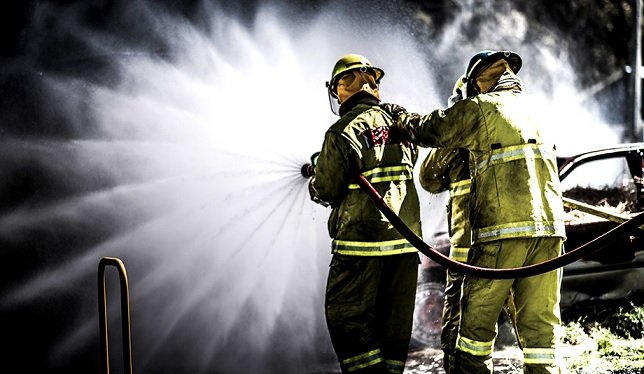Table of Contents
- Introduction to Firefighter Training
- Essential Skills for Firefighters
- Training Programs and Certifications
- The Role of Technology in Firefighting
- Physical and Mental Preparedness
- Real-Life Training Scenarios
- The Evolving Landscape of Firefighting
- Resources for Aspiring Firefighters
Introduction to Firefighter Training
The world of firefighting is as demanding as it is rewarding. Firefighters are the unsung heroes who stand as bulwarks against catastrophe, safeguarding lives and property. However, this noble profession requires more than just raw courage. Becoming a firefighter is lined with intensive training, embracing theory and practice. Many aspiring professionals opt for online firefighter training to complement traditional classroom education, providing flexibility and accessibility that aid in mastering crucial competencies. The rigorous regimen prepares candidates to handle the unpredictable nature of emergencies, equipping them with skills that range from first aid to complex technical operations.
Firefighting involves quick decision-making and unfaltering physical prowess. Trainees are subjected to rigorous scenarios that prepare them for real-life situations, honing their ability to act decisively when time is of the essence. Throughout this training, candidates are instilled with a sense of duty, fostering a commitment beyond personal welfare to encompass community service. In essence, the training transforms raw recruits into pillars of their community, ready and willing to confront danger head-on.
Essential Skills for Firefighters
To be effective, firefighters must develop a broad skill set to handle various emergencies. This skill set is not innate but learned and perfected over time through formal education and field experience.
- Physical Fitness and Endurance: The nature of firefighting requires superior physical fitness. Trainees engage in strenuous physical activities to build cardiovascular endurance, muscle strength, and overall stamina. This rigorous physical conditioning ensures they can endure the physical tolls of firefighting, which often involves climbing ladders, lifting heavy equipment, and working long shifts under extreme conditions.
- Technical Rescue Operations: Besides physical fitness, technical skills are paramount. Firefighters must be adept at operating various tools, from hydraulic cutters to advanced breathing apparatus. Training in technical rescue operations, such as extracting individuals from vehicular accidents or navigating confined spaces, is crucial to their education.
- Effective Communication: When disaster strikes, clear and concise communication can differentiate between chaos and control. Firefighters must convey instructions accurately under pressure, both within their team and to the public. It requires verbal skills, an understanding of non-verbal cues, and the ability to interpret various communication devices.
Training Programs and Certifications
Aspirants typically enroll in accredited programs that offer comprehensive training modules. These programs aim to provide an organized route toward obtaining vital certifications. Such certifications, verified by authorities like the U.S. Fire Administration, equip trainees with foundational knowledge and practical skills. The curriculum often includes fire behavior, hazardous materials awareness, emergency medical response, and community risk reduction. Upon completion, these certifications recognize the individual’s competency to both national and international standards, thereby enhancing career prospects in the firefighting domain.
The Role of Technology in Firefighting
Technology integration in firefighting has been transformative, bringing about a paradigm shift in handling emergencies. Tools like thermal imaging cameras enable firefighters to see through smoke, locate victims, and assess structural integrity. Meanwhile, the deployment of drones aids in aerial reconnaissance, allowing for real-time assessment of large-scale incidents beyond the immediate reach of personnel. Innovations covered by sources highlight the continuous advancements in gadgetry that increase efficiency and save lives. These technological enhancements empower firefighters, giving them the acumen to navigate modern-day challenges more effectively.
Physical and Mental Preparedness
Firefighting is as much a mental endeavor as it is a physical one. Training programs focus on building mental toughness and emotional resilience, preparing candidates to maintain composure and make swift decisions amidst chaos. Strategies to manage stress, prevent burnout, and engage in reflective practices are emphasized. Much like physical drills prepare the body, mental preparation equips the mind to deal with the traumatic and high-stakes nature of the job, ensuring that firefighters can continue to serve effectively without compromising their psychosocial well-being.
Real-Life Training Scenarios
Training academies employ a variety of simulation exercises that mirror potential real-world situations. These controlled environments are essential for bridging the gap between theory and practice. Fire simulators, smoke rooms, and obstacle courses are just a few tools used to recreate the high-pressure environment of a fire scene. Such practical exposure is invaluable, allowing firefighters to test and refine their skills safely while gaining the confidence required for actual emergencies. This experiential learning is crucial in ensuring that the response is immediate, coordinated, and effective when a real fire bell rings.
The Evolving Landscape of Firefighting
The landscape of firefighting is perpetually evolving, driven by changes in societal infrastructure, environmental conditions, and technological capabilities. Urban sprawl and the construction of complex architectural structures present new challenges, demanding innovative strategies and skills. Furthermore, the influence of climate change has led to increased frequency and intensity of wildfires, demanding firefighters adapt quickly to these emerging threats. The continuous evolution of the field necessitates ongoing education and adaptation, ensuring that firefighters remain adept at protecting communities in an ever-changing world.
Resources for Aspiring Firefighters
For those contemplating a career in firefighting, the journey is wrought with opportunities to learn and grow. Resources like digital learning platforms, local workshops, and mentorship programs serve as invaluable guides. These resources provide insights into the profession and practical learning and networking opportunities, helping aspirants gather the tools and support needed to succeed. Access to such resources helps budding firefighters align expectations with reality, motivating them to pursue this demanding yet fulfilling career with the necessary preparedness and determination.

